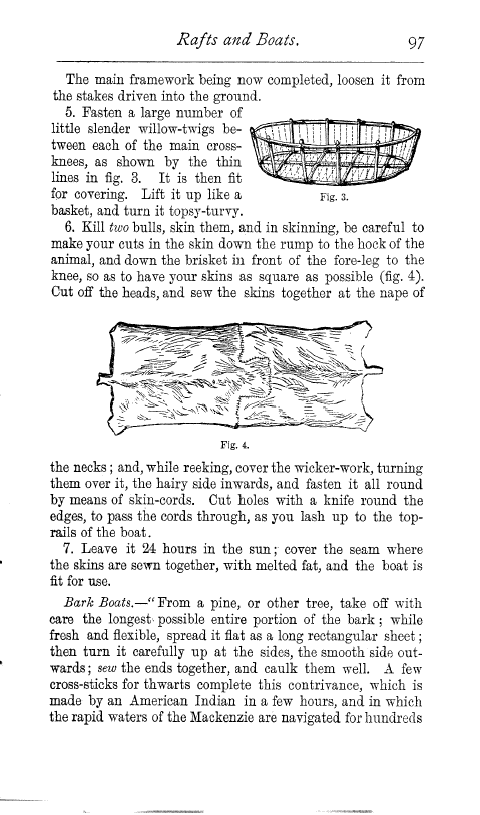Rafts and Boats.
97
The main framework being now completed, loosen it from the stakes driven into the ground.
5. Fasten a large number of
little slender willow-twigs between each of the main crossknees, as shown by the thin lines in fig. 3. It is then fit for covering. Lift it up like a basket, and turn it topsy-turvy.
6. Kill two bulls, skin them, and in skinning, be careful to make your cuts in the skin down the rump to the hock of the animal, and down the brisket in front of the fore-leg to the knee, so as to have your skins as square as possible (fig. 4). Cut off the heads, and sew the skins together at the nape of
Fig. 3.
Fig. 4.
the necks ; and, while reeking, cover the wicker-work, turning them over it, the hairy side inwards, and fasten it all round by means of skin-cords. Cut holes with a knife round the edges, to pass the cords through, as you lash up to the toprails of the boat.
7. Leave it 24 hours in the sun.; cover the seam where the skins are sewn together, with melted fat, and the boat is fit for use.
Bark Boats.-" From a pine, or other tree, take off with care the longest possible entire portion of the bark ; while fresh and flexible, spread it flat as a long rectangular sheet ; then turn it carefully up at the sides, the smooth side outwards; sew the ends together, and caulk them well. A few cross-sticks for thwarts complete this contrivance, which is made by an American Indian in a few hours, and in which the rapid waters of the Mackenzie are navigated for hundreds

